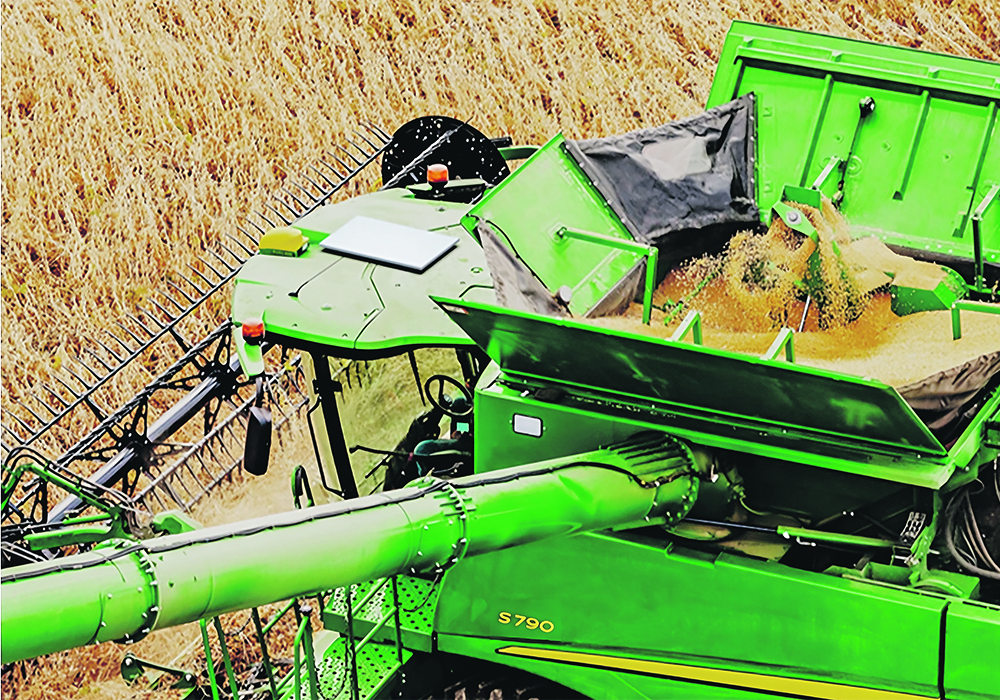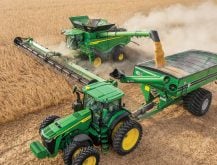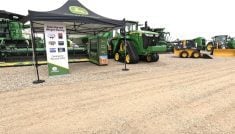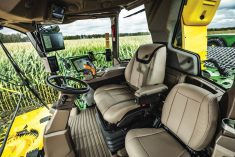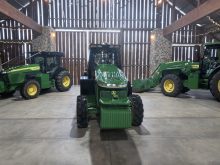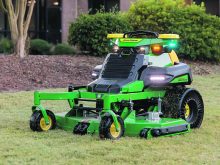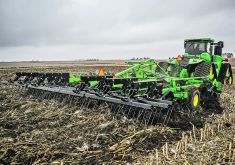The equipment manufacturer plans to start in the United States and Brazil as it aims to boost machine connectivity
One common complaint from many farmers is about less-than-impressive rural cellular coverage.
It’s a complaint not limited to Canada, and in fact Canadian producers have it better than those in some other countries.
One problem with limited service is that it affects the use of digitally connected machines in a farm fleet, which need good connectivity.
As a result, equipment manufacturers have been looking for solutions beyond typical cellular networks.
In January, John Deere announced an agreement with SpaceX’s Starlink satellite service to provide connectivity for its machines.
Read Also
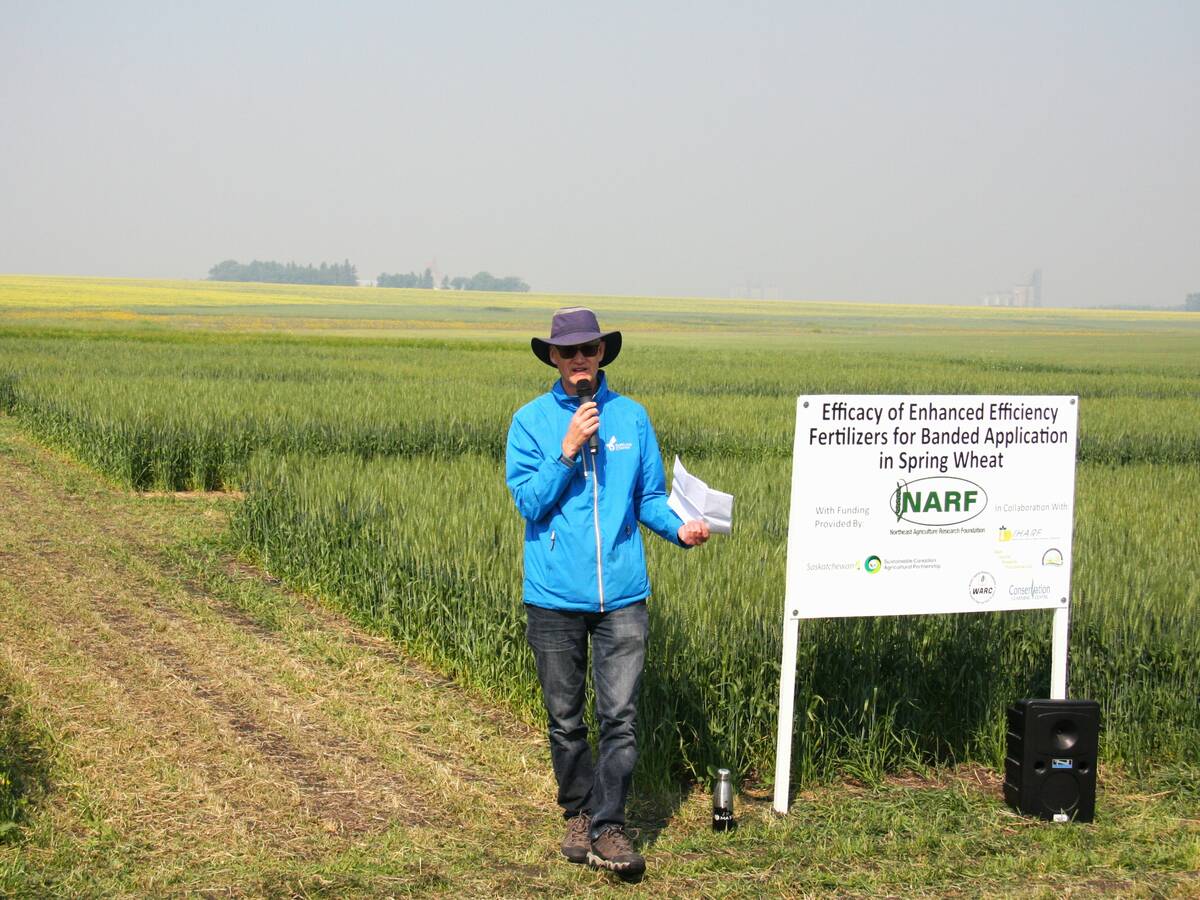
Fertilizer method’s link to emissions studied
A researcher says others studying greenhouse gas emissions aren’t considering how the loss of nitrogen into the atmosphere correlates with fertilizer application or if there is an impact to yield.
“This solution will allow farmers facing rural connectivity challenges to fully leverage precision agriculture technologies,” the company said in a news release.
“For areas that have no connectivity today via terrestrial cellular networks, we need a solution that could ultimately allow us to connect these machines once and for all,” said Mike Kool, senior product manager for connected fleet at John Deere.
Before settling on an agreement with Starlink, Deere invited several network providers to show the green brand what they could do.
“We started in September of 2022, with what we considered a first-of-its-kind industry day at our test farm here in Iowa,” said Kool.
“We had 40 of the largest sat-com providers here. Through that journey we’ve tested many different solutions. We went through customer co-op testing and our own internal testing in the U.S. and Brazil.”
However, the Starlink deal doesn’t mean all farmers will be looking at an immediate wholesale change in how their machines transfer data.
The use of Starlink will be phased in gradually. To start with, the service will be offered only in the United States and Brazil. The South American country has almost none of the necessary cellular infrastructure necessary for Deere to offer a useful level of digital machine management.
“Our goal is to bring this to a limited release this calendar year, 2024,” said Kool.
“The limited release will be in the U.S. and Brazil for 2024. We estimate that 80 percent of Brazil is just not covered by the necessary levels of connectivity, and that’s almost zero connectivity. And in the U.S. it’s about 30 percent.”
The Starlink rollout will be gradually expanded to other regions around the globe.
“We want to release this to everywhere that needs it,” Kool said.
“We know Canada does. We’ve heard that loud and clear. We know Australia does. We know New Zealand does, but we have to start somewhere.”
In field trials, the Starlink connection was shown to offer a high level of connectivity that improved data transfer and communication with Deere equipment. Kool cited an example of a custom harvester in the U.S. that participated in one of the practical tests of the system and received improved service.
“It allowed him to track his logistics to better use the technology on the machine,” he said.
“So when you add that layer of connectivity you know is going to work, that drives a different kind of value. From a customer perspective, it’s been awesome.”
Despite the enhanced capabilities offered by Starlink, Kool said Deere will not be abandoning the established cellular service networks. Instead, the Starlink system is intended only for those areas where cellular networks aren’t adequate.
“Our goal is to still connect via cell where we can,” he said.
“Once you lose cellular coverage, service would fall over to the Starlink terminal and just work. That’s the layer of ubiquitous connectivity we’ve spoken about.
“We’re going to continue to work with our mobile network providers that provide cellular connectivity, and there’s still going to be uses for that. For areas where they don’t have that connectivity, that’s where this solution fits in.”
For some producers, it could mean relying on a mix of both networks.
“There’s going to be instances for some customers where some of their fields have great connectivity and others don’t,” he added. “If you want to unlock the full suite of the tech stack offerings, this is a way to do that.
To connect to Starlink, machines will need a hardware upgrade to accommodate the different service.
For now, there is no definite timeline as to when Canadian producers can expect to join the Starlink service.
“If we talk about bringing a solution to Canada, we’re working through what that looks like right now,” Kool said.
“There’s potential to bring something to the market there in 2025. I can’t commit to any specific dates. There’s a lot that goes into it from a certification perspective.
“We think this solution is going to be a game changer. If you can deliver connectivity in real time, it just makes all these (digital) solutions that much better.”




